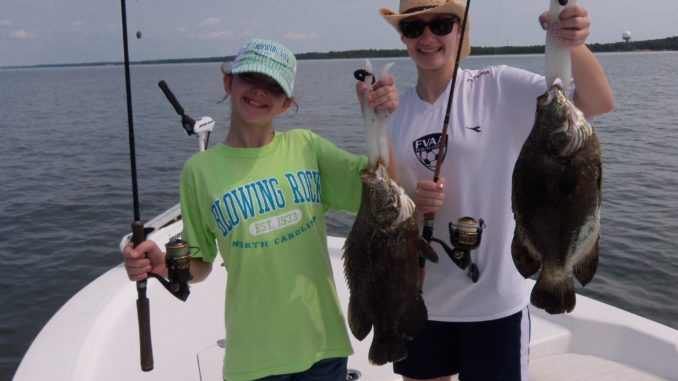
Tripletail (lobotes surinamensis) is a warm-water fish, usually found in tropical regions, but scattered as far north as Massachusetts while drifting in the Gulf Stream or its eddies. Offshore fishermen should not be surprised to occasionally find tripletail floating beside flotsam. They are reluctant to take a bait at times and are hard fighters when hooked.
Most experts say tripletail are rarely found inshore north of North Carolina. For many years, they weren’t noticed or weren’t in sufficient numbers to attract attention from fishermen, which was their lost. In addition to being challenging fighters, tripletail are excellent table fare. In the past few years either more tripletail have moved into the area during the warm summer months or fishermen are recognizing them more readily.
At first look, tripletail resemble bluegill and appear they might be a gigantic saltwater bream with an appetite for steroids. With 5-pounders, this description fits, but fish of 20 pounds and heavier appear almost prehistoric. Tripletail may grow to heavier than 40 pounds.
The defining characteristic and namesake of tripletail is its fins. The dorsal fin is large and extends well back and rounds out just above the tail. The anal fin is also very large and rounded, and these two fins beside their tail create the impression of a fish with three tails.
Once hooked, a fisherman feels as if he has a fish with the speed and strength of three tails. Tripletail can quickly cover lots of water, and they fight doggedly all the way to the boat. They sometimes jump trying to dislodge the hook.
Tripletail often float on their side at the surface, with one side out of the water, and they may look like a huge floating leaf. Many biologists theorize this is a means to mimic shelter and attract smaller baitfish.
A growing number of anglers are sight-fishing for tripletail they spot floating on their sides. Another way to locate them is to use polarized glasses to spot them resting in the shadows under buoys, day markers, towers or any structure that extends out of the water.




Be the first to comment